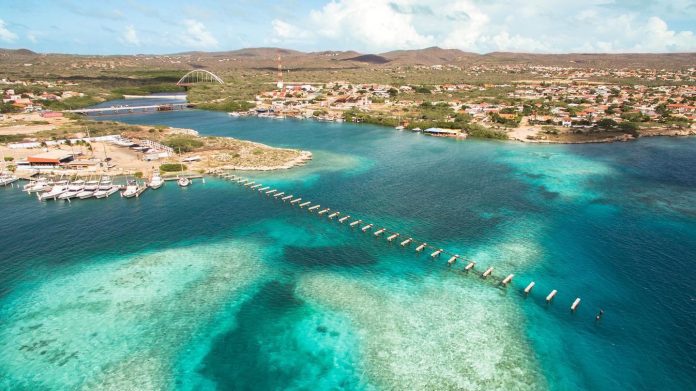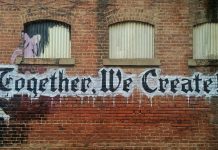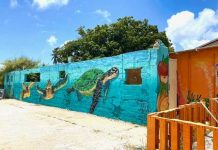“We don’t have time to sit on our hands as our planet burns. For young people, climate change is bigger than election or re-election. It is life or death”, Alexandra Ocasio –Cortes. I am sure scrolling down your Facebook news feed last month was so devastating. Reading about all the disasters, sadness, and turmoil people are experiencing around the world. Losing their loved ones, their homes, their communities, and their cities. Bushfires in Australia, flash floods in Indonesia, never recorded high temperatures in Europe, volcano eruptions in the Philippines, and heavy rains in Brazil amongst them. The essence of what US representative Alexandra Ocasio-Cortes is saying is that climate change is not negotiable anymore. The Goal of the Month for February is Sustainable Development Goal 11: Make cities and human settlements inclusive, safe, resilient and sustainable.
But why is SDG 11 so relevant and important for us to consider? Well, the United Nations Environment Program (2020) states that “due to their high concentration of people, infrastructure, housing and economic activities, cities are particularly vulnerable to climate change and natural disasters impacts. Building urban resilience is crucial to avoid human, social and economic losses while improving the sustainability of urbanization processes is needed to protect the environment and mitigate disaster risk and climate change”. But, besides the climate challenges, the Sustainable Development Platform of the UN emphasizes the fact that “urgent action is needed to reverse the current situation. With the areas occupied by cities growing faster than their populations, there are profound repercussions for sustainability”.
Interesting update, last week Tuesday, January 28th 2020 Mrs. Marisol Lopez – Tromp was sworn as the new Minister of Spatial Development Infrastructure and Environment of Aruba. Her goal with this new position is to continue the work of the former Minister, Mr. Otmar Oduber, and to promote balanced economic growth and development, while taking into account the environment and biodiversity needs of the island.
Breaking down SDG 11.
To get a better understanding on SDG 11 it is important to break it down and explain all relevant indicators. SDG 11 consists out of 7 main indicators, which are: affordable housing, sustainable transport, participatory planning, cultural and natural heritage, disaster reduction, air quality and waste management, and public spaces. Out of these indicators, there are several sub indicators that are also relevant and crucial within this discussion, such as rural-urban planning, mitigation of climate change, basic services, and securing land rights.
1. Affordable Housing.
One of the first project on sustainable living was the Smart Community (housing) which was founded in 2014 by a consortium comprising of the Government of Aruba, FCCA, Utilities NV, ELMAR, WEB ARUBA NV, SETAR and TNO Caribbean. According to FCCA, “smart Community Aruba entails the creation of a residential neighborhood in Aruba comprising of 20 houses geared at demonstrating sustainable living principles in a real life Aruban environment. To this extent the neighborhood will serve as a small-scale environment for demonstrating sustainable energy technology specific to the Caribbean’s climatic conditions. Findings and results will lead to public dissemination towards Aruba’s people, businesses and/or education institutions. Moreover, results can inform policy making as to benefit Aruba as a whole”. Without considering the transparency and legitimacy procedures within this project, the essence of this project is highly positive and serves as a great stepping stone moving forward.
Besides this project, the Government of Aruba has a responsibility to continue securing affordable housing opportunities for the Aruban society. If we evaluate the last 10 years, the Government of Aruba provided approximately 934 affordable housing options within the first years (FCCA, 2020). Half way down the last 10 years, this decreased significantly, because they focused on renovated existing housing units. Fortunately, new investments and constructions picked up again in the last years.
2. Sustainable Transport.
Sustainability is not only the infrastructure of a country but also consists with how people in society mobilize themselves. Aruba’s population has grown significantly over the last decades, which has led to an increase of the number of cars. Even though the island has a public transport system, mobility on the island is highly dependent on individuals having a car and households having more than one car. An interesting component of sustainable transport according to the SDGs is that we are “improving road safety, notably by expanding public transport, with special attention to the needs of those in vulnerable situations, women, children, persons with disabilities and older persons”. Transportation on the island has always been a challenge. While the infrastructure and access to more roads has improved, the mobility concerns are still present.
3. Participatory Planning.
Being involved in the sustainable human settlement planning and management remains an important aspect considering the need for collective input in the development factors of Aruba. Aruba has been very busy constructing the National Spatial Planning (ROP) 2019-2029 and have now moved to the stage where the Government of Aruba together with the input of the community and all remaining stakeholder, will define what can and can’t be permissible within each category. Whether it may be housing, protected, and commercial areas, all areas will be structured accordingly (ROPV). The main concern with this, is that we keep our focus on what is better for the entire island. What will in the end be better for the economy, social well-being of our people, health related ideals of our people, natural heritage protection, and environmental concerns and so much more.
4. Cultural and Natural Heritage.
Up to this point Aruba has not been very successful in protecting its cultural heritage, however has made tremendous advancements towards protecting its natural heritage. Since 2000 Aruba has protected one fifth of the island by establishing the Arikok National Park. Between these parameters, all wildlife, flora and fauna are protected and safeguarded. However, besides protecting life on land, Aruba has a lot of life below water in desperate need for attention. This is how the marine protection area (MPA) project initiated. Without analyzing how this went about, we can now say that Aruba will be protecting its natural heritage below water as well through the four marine parks: MPA Arikok, MPA Seroe Colorado, MPA Mangel Halto, MPA Oranjestad. These MPA will be under supervision and care of the Arikok National Park.
5. Disaster reduction.
Aruba compared to other remaining Caribbean islands has not experienced as impactful and detrimental disasters over the decades. However, this is not a reason for the island to stay behind. With the challenges that come with small-scale societies, one of the key demands are knowledge, education, and research and development. Aruba is slowly but surely realizing that self-sufficiency is more sustainable in the long run. By having the right policies, strategic plans and access to relevant data, Aruba can reduce the risks that come with geographical and environmental challenges that can’t be ignored for much longer.
6. Air quality and waste management.
One of the most discussed topics within our community is related to waste management, and the environmental and health concerns that come with it. Aruba has battled year in and year out with this dilemma on figuring out how we are going to mitigate the effects is has and will continue to cause if nothing gets resolved. In short, Aruba has used the “landfill system” for years and we are now experiencing the harmful effects thereof. Constant dump fires, causing toxic gases to release into the atmosphere, hazardous gases reaching surrounding neighborhoods, contamination of soil and life below water and so on. The only step towards stopping this is what we know as the “Serlimar Bill”. With its pros and cons discussed within the community, it is the only solution presented thus far by the government. The call goes out to the Government of Aruba and the Parliament of Aruba to stop this and to the community of Aruba to keep persisting for change. Not only for us now, but for the future generations.
Moving Forward.
After exploring the SDG 11 indicators, we can conclude that Aruba is currently at a cross road. Are we going to make the bold and necessary move which will mean sacrificing our own selfish behaviors for the progress and well-being of our communities? Or are we going to continue ignoring the problems we have and are creating? As a member of the community of Aruba and of the global community, each and every one of us have a responsibility to participate in this dialogue. Politicians, Ministers, Policy advisors, Private sector, Public sector, Academia, NGOs, Advocates, and the Community should realize that it is not an individual fight, but a collective one that will require collaboration. Because we are all contributing one way or the other to the destruction. Let’s for once contribute to the resolution.















